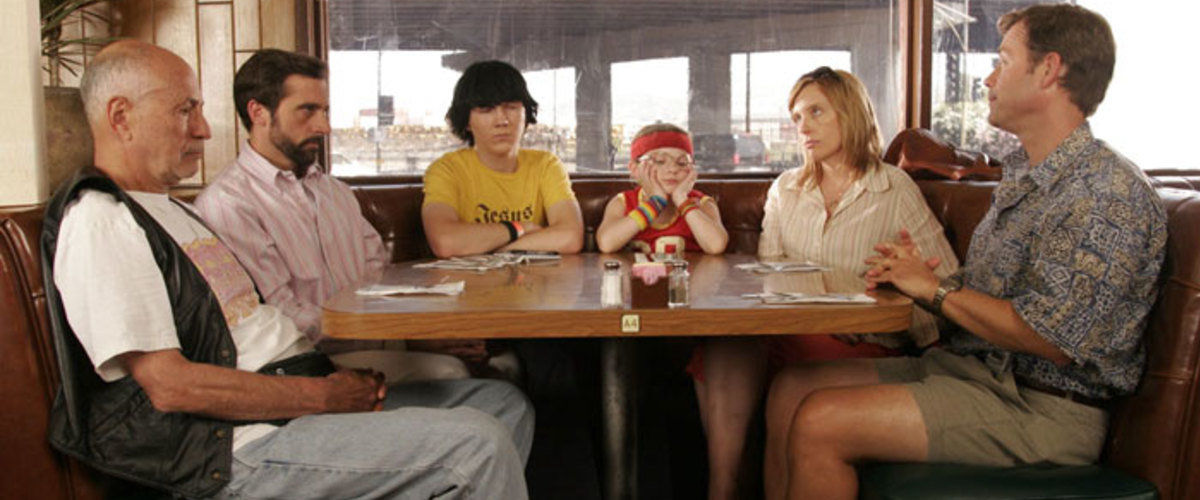To celebrate the family awkwardness of Thanksgiving weekend, Jorge takes a look at one of cinema’s most memorable dysfunctional families and how they make their entrances.

Look, no family’s perfect. Far from it. And no holiday brings out the imperfections more than Thanksgiving. Every difference of opinion, tightly-held grudge, annoying personality trait, buried secret and imprinted trauma tend to resurface. And while it may be hell for those going through it, these interactions are usually fertile ground for narrative drama.
But most families tend to be dysfunctional year-round, not just during the holidays. Some don’t need a holiday weekend or a glass of wine to bring out their unpleasant side. All you need to see it is a quick first glimpse. So let’s take a look at the Hoovers in 2006’s Little Miss Sunshine, who are precisely that kind of family. Let’s see how they are each individually introduced in the script, as fully flawed human beings...
Little Miss Sunshine
Written by: Michael Arndt
[You can read the whole script here.]
Though far from one-dimensional caricatures, each of the members of the Hoover family is defined by a personality trait that will help push the movie forward, while also being an obstacle for the rest of the family. When we first meet them, they are each operating individually, each in their own little pockets of reality. They have yet to learn that they function better as a unit.
We meet Oliva first. “A six-year old girl sits watching the show intently.” The tape of a beauty pageant. “Big for her age and slightly plump […]. She studies the show very earnestly.” Olive pauses the tape and rewinds. She imitates what she sees. She’s gonna be chasing this moment and this feeling for the rest of the movie. As a matter of fact, the entire family will be for her. The emotional goal of the movie is introduced in the first seconds alongside Olive.
Richard, the father, is next. He “stands in front of a generic community college classroom.” “Generic” is an appropriate adjective to describe him, despite what he tells himself and his family. He wears khakis, and sneakers, and “his peppy, upbeat demeanor just barely masks a seething sense of insecurity and frustration.” He then mentions “Winners and Losers.” Another underlying theme of the movie, represented visually in the contrast of what he’s saying and everything else about him.

***

Then we meet Sheryl, the mother. She smokes as she’s driving. She’s frazzled, just trying to get a grip. As she yells to her husband over the phone about something that just clearly went unexpectedly wrong, “she listens with increasing irritation.” That’s all we really need to understand the role she plays in the family dynamics: the passive-aggressive matriarch who tries to keep it all together by the skin of her teeth, which usually have a cigarette hanging from them.
Her brother Frank has a small, word-less introduction. He’s “in a wheelchair, parked against a wall.” He has “empty eyes.” It’s a single image. Perhaps even a single frame. But we understand this man is not doing well. He’s catatonic, emotionally detached, and in some sort of medical facility. In composition with the rest of the Hoovers we’ve met, it’s unlikely it’ll get much better for him anytime soon.

***

Before we meet Grandpa, we see what his hands are doing. They “spill a brown powder into a small mirror.” A blade cuts that powder. A dollar bill is rolled as the lines are snorted. The scene reveals that the person doing this is in fact an eighty-year old man, “A Roz Chast kind of grandfather.”
And last we meet Dwayne,, “a handsome, skinny fifteen year old with a mohwak” (in the final version this is exchanged for Paul Dano’s bowl-like hair cut; arguably an equally strong hair statement). He’s bench pressing under a huge portrait of Nietzsche that’s painted on a bedsheet. And honestly, if there’s anyone you can understand entirely just by one item hanging in their bedroom, it’s the teenager with the Nietzsche bedsheet.

***

These introductions all happen within the first four or five minutes of the movie. The film only offers us a few frames and a couple of seconds with each of the characters so we can try to understand their goals, life views, problems, worries and dreams. And Little Miss Sunshine is incredibly effective at it.
It makes every inch of the frame, prop, line of dialogue, performance gesture, and jump cut count and further inform the character. So by the time these six people are thrown into a room together, and then forced into an even smaller yellow van for a cross-country adventure, we already have a sense of who they are. We’re a part of their family.
So if this Thanksgiving weekend you’re feeling as trapped with your family as someone trying to get to a child beauty pageant in a defective RV, go around the room and mentally create little character vignette introductions for everyone. Boom. Your life is now an award-winning indie darling.